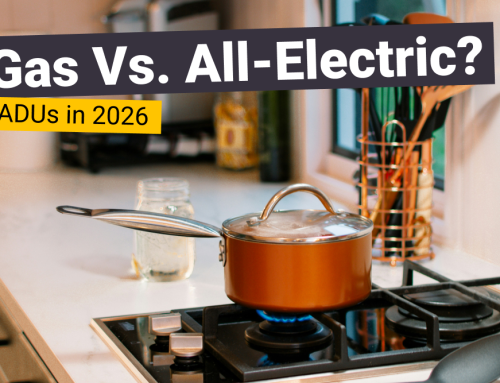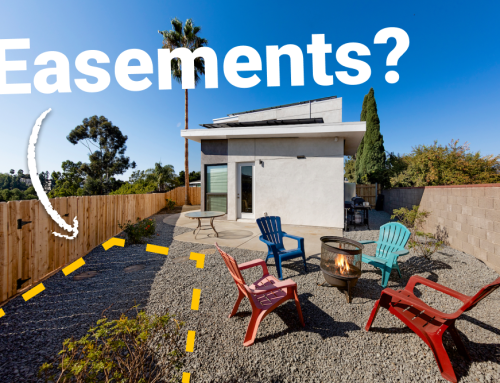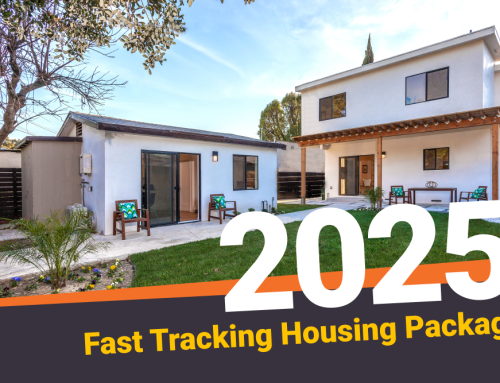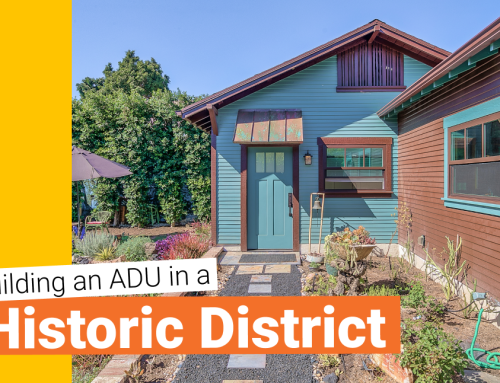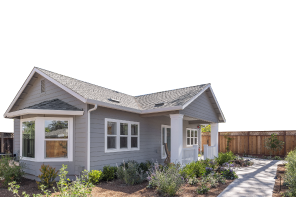Junior accessory dwelling units (JADUs) have a lot of homeowners scratching their heads. They’re just smaller versions of ADUs, right?
Well, yes and no.
Just because your ADU is on the smaller size doesn’t automatically make it a JADU. In fact, JADUs actually come with their own set of regulations and requirements in California.
So what the heck is a JADU?
We’re here to help!
Maxable has educated thousands of homeowners about ADUs and JADUs. We match you with designers and builders ideal for your project, and research your property so you can make educated decisions every step of the way.
Since the adoption of Assembly Bill No. 68 and Assembly Bill No. 881, California single-family homeowners have been allowed to add both one ADU and one JADU to their property. That’s a great opportunity, but it has also led to some confusion.
What is a JADU?
A junior accessory dwelling unit (JADU) is a living space built from an existing structure or space on the property with a max size of 500 sq ft. Eligible spaces to be converted into a JADU include a master bedroom, garage, or other space within the main residence. Similar to an ADU it must contain a:
- Kitchenette or “efficiency kitchen”
- Bedroom or sufficient space for a bed
- Bathroom (or access to one)
Also like normal ADUs, JADUs must be built for long-term housing, so sufficient water, sewage, electricity, and proper insulation are a must.
So, you’re probably asking…
What’s the difference between a JADU and an ADU?
The differences between a JADU and ADU lies primarily in the restrictions. JADUs don’t benefit from the same regulations as a normal ADU making them less than ideal for homeowners looking for a flexible living space.
Size
JADUs cannot exceed 500 sq ft, whereas ADUs can be up to 1,200 sq ft depending on your jurisdiction. With good design, 500 sq ft can usually meet the needs of most homeowners. However, where ADUs are allowed to add 150 extra square feet for ingress and egress for conversions, JADUs cannot. You can only work within the existing space you intend to convert.
Kitchen
A full kitchen is not required in a JADU, but it must meet “efficiency kitchen” requirements. Requirements include the following:
- A food preparation counter and storage cabinets that are of reasonable size in relation to the size of the JADU
- Cooking facilities with appliances–240-volt outlets are permitted
- No restriction on maximum waste-line diameter
Bathroom
One of the biggest differences is the bathroom. The JADU can share the bathroom with the primary residence, but if you intend for the two to share, the JADU must have interior access to the primary residence. This can lead to privacy problems, especially if you’re renting out your JADU to a stranger.
JADU Requirements
Below is a comprehensive list of Junior ADU requirements and restrictions:
- Size – 500 sq. ft. max.
- 150 sq. ft. extra for ingress and egress not allowed unless your jurisdiction specifically allows it. According to CA state law, that extra 150 square feet applies to ADUs only.
- Location – Must be within a proposed or existing single-family dwelling or accessory structure, such as a garage.
- Separate Entry – Exterior access (a separate entrance for the JADU) is required from the proposed or existing single-family dwelling.
- Interior entry required if bathroom is shared with the main residence
- Parking – No parking required for a JADU, except if you convert your attached garage, in which case the parking must be replaced.
- Bathroom – May have a separate bathroom or shared with the main-family dwelling.
- Kitchen – Must meet “Efficiency Kitchen” requirements:
- A food preparation counter and storage cabinets that are of reasonable size in relation to the size of the JADU
- Cooking facilities with appliances–240-volt outlets are permitted
- No restriction on maximum waste-line diameter
Can I rent out a JADU?
You can put an ADU and a JADU on the property and rent them both out. However, according to Section 65852.22. Section A, you’ll see that owner-occupancy is required for the JADU.
You may be thinking — well, wait! Owner Occupancy was banned in the new ADU laws. You’d be correct, except it only applies to ADUs, not JADUs.
Here’s where the owner-occupancy clause is broken out Section 65852.22
“(2) [JADUs] Require owner-occupancy in the single-family residence in which the junior accessory dwelling unit will be permitted. The owner may reside in either the remaining portion of the structure or the newly created junior accessory dwelling unit. Owner-occupancy shall not be required if the owner is another governmental agency, land trust, or housing organization.”
That section goes on to talk about deed restriction, which will also apply to your ADU.
(3) Require the recordation of a deed restriction, which shall run with the land, shall be filed with the permitting agency, and shall include both of the following:
(A) A prohibition on the sale of the junior accessory dwelling unit separate from the sale of the single-family residence, including a statement that the deed restriction may be enforced against future purchasers.
(B) A restriction on the size and attributes of the junior accessory dwelling unit that conforms with this section.
Replacement Parking is Required for JADUs
No jurisdiction can require replacement parking for a garage conversion to an ADU, but a JADU doesn’t get those same perks. If converting a garage to a JADU, the parking must be replaced. However, if you’re converting space within the home, JADUs are exempt from all parking requirements!
Want more details about JADUs? Watch our JADU video.
Can a garage be converted into a JADU?
Yes, you can convert your garage into a JADU. However, if you are building a JADU without a bathroom, remember that the occupant still needs interior access to a bathroom in the main house. This can be difficult with a garage conversion, which is why a bedroom conversion is ideal for a JADU. Or, you can include a bathroom in the JADU, but this will drive up additional costs.
At that point, you’d might as well spend the extra couple hundred dollars to upgrade the kitchenette into a full kitchen and go for a full ADU. Despite the small change, an ADU is going to yield a much higher appraisal and you don’t have to worry about owner occupancy.
Is a JADU worth it?
A JADU (Junior Accessory Dwelling Unit) can be a smart choice in specific scenarios—especially for multi-generational living or when working with tight space and budget constraints. Since JADUs are created from existing space within the home (typically a converted bedroom or garage space with a small kitchenette), they can be more affordable and faster to build.
However, JADUs come with more limitations than full ADUs. These often include:
- Owner-occupancy requirements
- Smaller maximum size (up to 500 sq. ft.)
- Limited kitchen facilities
- No separate utility meters
Because of these restrictions, JADUs offer less long-term flexibility—especially if you plan to rent the unit or eventually sell your home for a higher price. In contrast, a detached or attached ADU can serve as a true second home on your property, allowing for more privacy, higher rental income, and greater resale value.
For homeowners focused on maximizing ROI, rental potential, and resale value, a full ADU is typically the better investment. But for those who need an affordable, fast, and simple solution for housing a loved one, a JADU may still be worth it.
Plan, hire, and manage your ADU project with Maxable.
At Maxable, we believe that building an ADU should be fun and exciting. You shouldn’t have to be the one to deal with confusing obstacles like permitting snafus or ever-changing regulations. We’ll be by your side every step of the way and connect you to experienced designers and general contractors in your area to make sure your project goes as smoothly as possible.
Leave the headaches to us! Check your address and see what Maxable can do for your home. Talk to a Maxable Agent today.



